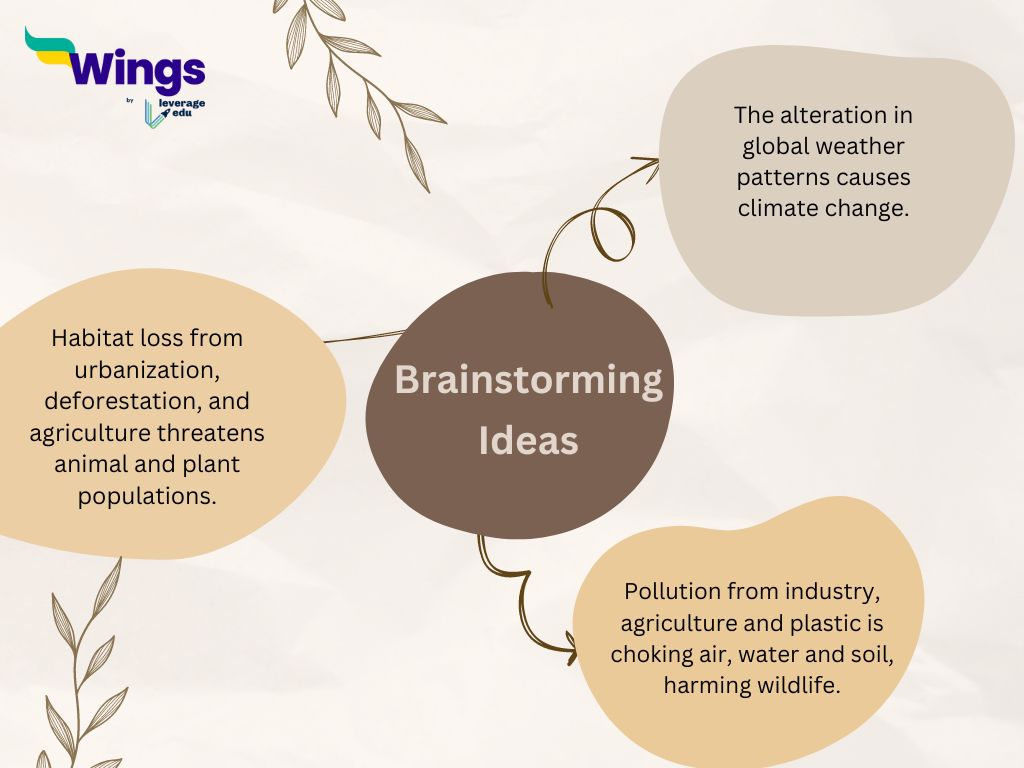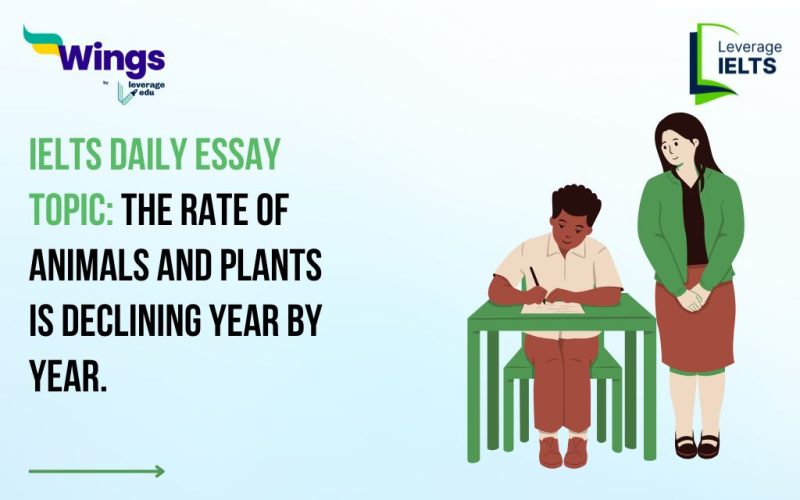Brainstorming Ideas
- Habitat destruction because of rapid urbanisation, deforestation and agricultural expansion.
- The alteration in global weather patterns causes climate change.
- Industrial activities, agricultural runoff and plastic waste have contaminated air, water and soil, making environments unsuitable for many species.

Q. The rate of animals and plants is declining year by year. What are the causes? Could you please explain and give relevant examples?
Ans. The decline in the rate of plants and animals is a pressing issue that has garnered significant attention in recent years. This phenomenon is caused by several reasons, which have huge implications for biodiversity and ecosystem stability.
One of the primary reasons for the decline in plant and animal populations is habitat destruction. Urbanisation, deforestation and agricultural expansion have led to the loss of natural habitats, forcing species to migrate or die. For instance, the Amazon rainforest, also known as the “Lungs of the Earth”, witnessed extensive deforestation for cattle ranching and plant cultivation. This has resulted in the displacement and extinction of various species in the region.
Another major factor is climate change because of the alteration in global weather patterns which has a detrimental impact on various species. The increase in temperature, changes in precipitation patterns and extreme weather events have disrupted the natural habitat and lifecycle of many plants and animals. For example, the polar bear is facing a severe threat because of ice melting in the Arctic region, which is crucial for survival and hunting practices.
Pollution also plays a critical role in the decline of biodiversity. Industrial activities, agricultural runoff and plastic waste have contaminated air, water and soil, making environments inhospitable for many species. Marine life, in particular, has been severely affected due to plastic pollution. Sea turtles, for instance, often mistake plastic bags for jellyfish, leading to ingestion with often fatal consequences.
To conclude, the drop in the rate of animals and plants is a multifaceted issue caused by habitat destruction, climate change, pollution and overexploitation. Addressing these issues requires concerted global efforts to implement sustainable practices and protect natural habitats.
Analysis
Paraphrased Statement: The decline in the rate of plants and animals is a pressing issue that has garnered significant attention in recent years.
Thesis Statement: This phenomenon is caused by several reasons, which have huge implications for biodiversity and ecosystem stability.
Body Paragraph 1-Topic Sentences: One of the primary reasons for the decline in plant and animal populations is habitat destruction.
Body Paragraph 1- Supporting Reasons and Explanations: Urbanisation, deforestation and agricultural expansion have led to the loss of natural habitats, forcing species to migrate or die. For instance, the Amazon rainforest, also known as the “Lungs of the Earth”, witnessed extensive deforestation for cattle ranching and plant cultivation. This has resulted in the displacement and extinction of various species in the region.
Body Paragraph 2- Topic sentence: Another major factor is climate change because of the alteration in global weather patterns which has a detrimental impact on various species.
Body paragraph 2- Supporting Reasons and Explanations: The increase in temperature, changes in precipitation patterns and extreme weather events have disrupted the natural habitat and lifecycle of many plants and animals. For example, the polar bear is facing a severe threat because of ice melting in the Arctic region, which is crucial for survival with hunting practices.
Body Paragraph 3- Topic sentence: Pollution also plays a critical role in the decline of biodiversity.
Body paragraph 3- Supporting Reasons and Explanations: Industrial activities, agricultural runoff and plastic waste have contaminated air, water and soil, making environments inhospitable for many species. Marine life, in particular, has been severely affected due to plastic pollution. Sea turtles, for instance, often mistake plastic bags for jellyfish, leading to ingestion and often fatal consequences.
Conclusion: To conclude, the drop in the rate of animals and plants is a multifaceted issue caused by habitat destruction, climate change, pollution and overexploitation. Addressing these issues requires concerted global efforts to implement sustainable practices and protect natural habitats.
Vocabulary in Use
| Word | Meanings |
| Garnered | Collected. |
| Implications | Consequences. |
| Extensive | Large in scope. |
| Cattle Ranching | Raising cattle for meat or dairy. |
| Precipitation Patterns | Rainfall distribution. |
| Disrupted | Interrupted. |
| Contaminated | Made impure. |
| Inhospitable | Unfriendly for living. |
| Ingestion | Taking in food or substances. |
| Multifaceted | Having many aspects. |
Linkers and Connectors Used
Following are the linkers and connectors used:
- For instance
- For example
- To conclude
Are you preparing for IELTS? Check out this video to improve your writing skills for the IELTS exam given below👇.
Download the Leverage IELTS App today.


Need help preparing for IELTS? Check out the best IELTS preparation courses in the market offered in a live training environment.
 One app for all your study abroad needs
One app for all your study abroad needs















 60,000+ students trusted us with their dreams. Take the first step today!
60,000+ students trusted us with their dreams. Take the first step today!